In a candid discussion, Ravi Gupta, Chairperson, Sugar BioEnergy Forum, Indian Federation of Green Energy, and Executive Director, Shree Renuka Sugars underscores ethanol’s role in transforming India’s energy and farm economy. He calls for encouraging Flex Fuel Vehicle (FFV) with GST incentives, stressing that ethanol and EVs can co-exist.
Q1. Let’s address the elephant in the room: we are hearing all sorts of noises regarding E20 not being safe for vehicles. How has the ethanol programme benefited the country?
Ans: Let me come to your first question first. Much has been asserted by the experts in this field already, so it does not need a comment from me. We did not reach 20% ethanol blending in a day. It came out of well well-thought-out path given in the Roadmap of Ethanol Blending, after studying all the aspects of availability and feasibility. All stakeholders were involved in the process of finalising the strategy. There have been extensive studies done by the Automobile Research Association of India (ARAI), standalone automobile companies, IIT Delhi, etc, before the launch of 20% blended fuel. And E-20 have been launched post these studies only.
As you know, the intrinsic properties of ethanol fuel, in fact, help burn petrol better, which is a boon for car engines. I know there are views against 20% ethanol going viral in the last few days, but I am hopeful that the right awareness shall be created by the experts during the course of time.
As far benefit of ethanol is concerned, no one can deny that the ethanol blending programme has benefited the country immensely. It has not only benefitted our farmers and industry, but it has also brought a renaissance in green energy thought process in the country. Before 2014, there were hardly any discussions on green energy. No one used to talk about CBG, SAF, Green Hydrogen or any other green energy earlier; now it has become a national goal. The success of the ethanol blending programme has provided experience and confidence both for the policy makers and producers to foray into other green energies. This is a big change, and also a crucial one.
With the increasing population, the energy needs are increasing. Rather than being dependent on fossil fuels and crude imports, it’s essential to look inward at the wealth that farmers are producing and meet energy requirements from it. Ethanol blending also brought India to the forefront of green leadership. The formation of the Green BioFuels Alliance, headquartered in India, is an example of the same.
Coming to direct economic benefits, before EBP, the sugarcane arrears of the farmers were running into Rs. 20,000 crores. It became difficult for the sugar industry to sustain itself. India was exporting sugar, giving huge incentives. Now, all these are things of the past. Farmers are being paid regularly, we can turn our surplus sugar into ethanol and use it in our country.
On the environment front, we have reduced 73.6 million ton of Co2 emissions, all thanks to the ethanol blending program.
Q2. If the ethanol program is so beneficial, then what is the next way forward for the programme?
Ans: We have already reached the 20% ethanol-blending goal. But I feel the stage is set to launch Flex Fuel Vehicles (FFVs). If FFVs are introduced, then consumers shall have the choice to use ethanol or petrol, whichever they wish. Brazil have implemented it successfully, India is in the right position to replicate it.
Q3. What should be done to ensure the costs of FFVs are subsumed?
Ans: I am glad that you asked the question. It is a fact that FFVs are costlier than the regular petrol vehicles. The government, considering the benefits of ethanol, should address this issue.
We know that the Government is trying to rationalise the GST rates. I feel, to begin with, the Government should keep FFVs out of the tax bracket and then bring it to a lower slab. This will also give a permanent market to ethanol and boost the confidence of ethanol producers.
For the cane farmers, too, I feel that this policy would be beneficial and help them generate an additional cash flow. FFVs are win-win for everyone.
Q4. There is always talk about EVs eating into Ethanol. Can both co-exist?
Ans: We as a country import 85% of our transportation fuel. I feel there is space for all types of indigenous green energy. Ethanol and EV can coexist. The pie is too big; everyone can get their share.
Q5. The sugar consumption decreased. Your take on this?
Ans: There are several factors behind this. We have higher consumption during the summer months, but this year, monsoons were early, so there was a short summer, impacting the sugar demand. Historically, we have seen that beverage and ice cream sales slump during the rains.
I would like to point out another very important factor. This year, lots of sucrose (sugar) demand was shifted to fructose (fruits), and this is due to higher production and availability of mangoes, especially in the current summer months. The total mango production in the year 2025 has gone up by 2 million ton. This does not appear to be a long-term trend, but something to watch.
Q6. Your outlook on 2025-26 SS. If there is a bumper crop, should the industry be worried?
Ans: ISMA’s production estimate of gross sugar production is 35 million ton in 2025-26 (without considering the sugar diversion towards ethanol production). Industry has requested the Government to buy maximum sugarcane ethanol, and if industry can divert 6 million ton of sugar into ethanol, then we shall have quite a balanced supply and demand, and in case that does not happen, then India shall have to look at exports as an option. India cannot afford to keep stocks within the country because, all being normal, the year 2026-27 is also going to have a bumper crop.
I am expecting a positive 2025-26 sugar season for the industry. I am sure ethanol prices, which have not been increased in the last 2 years in spite of an increase in cane costs, will be increased. The sugar season is starting with an optimum level, and the government, being aware that sugar production is high, shall surely consider buying more sugarcane ethanol this year. I am quite optimistic that the Government will weigh the issues that might arise from excess sugar and will take the correct measures.
Q. What would you ask for the sugar industry?
Ans: I think it is high time we institutionalise the process of declaring the Minimum Sale price of sugar and Ethanol prices along with the FRP of sugarcane. This should be an automatic process. MSP of sugar has not been increased since the last six years, while sugarcane prices have continued to increase.
This is an unsustainable business model. If we can institutionalise the system of declaring MSP of sugar, and prices of ethanol along with sugarcane price, this shall not only give clarity but also help in better planning for the industry and the farmers.

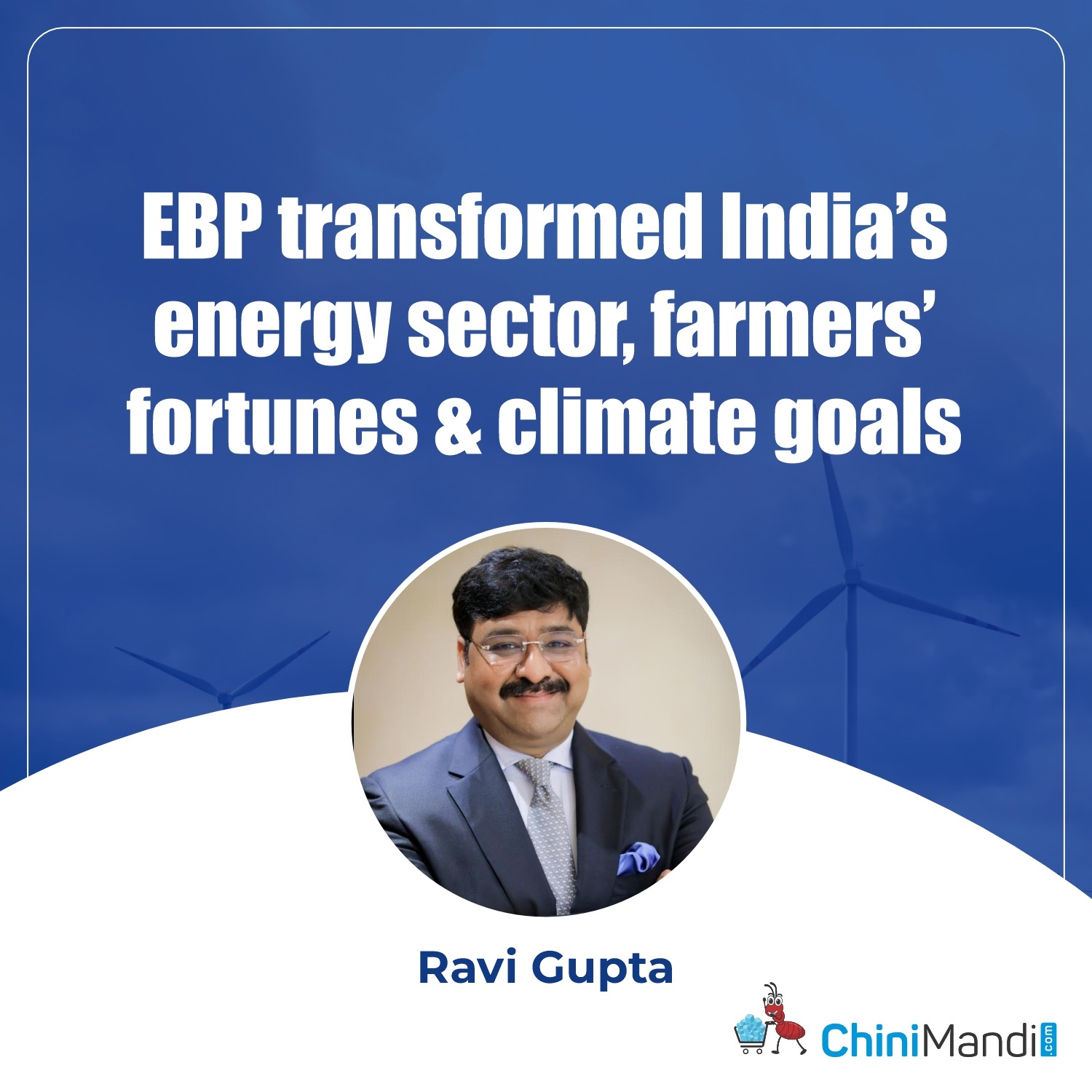


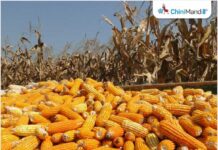
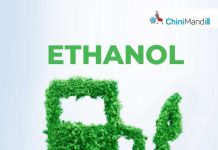





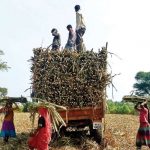



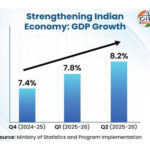

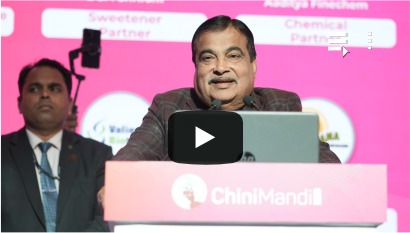
[…] Read More: EBP transformed India’s energy sector, farmers’ fortunes & climate goals: […]